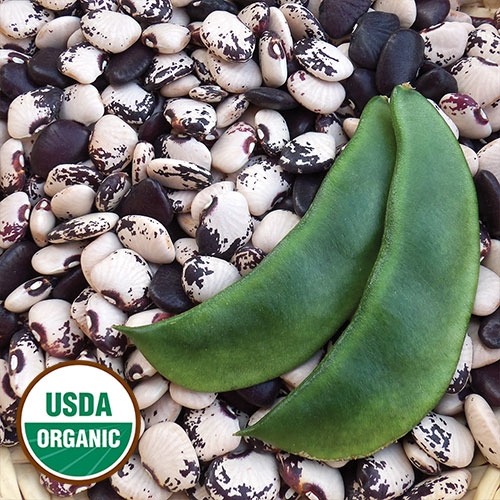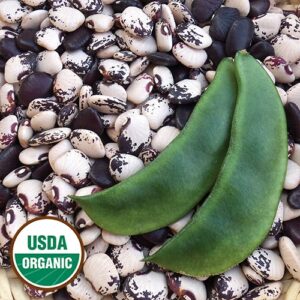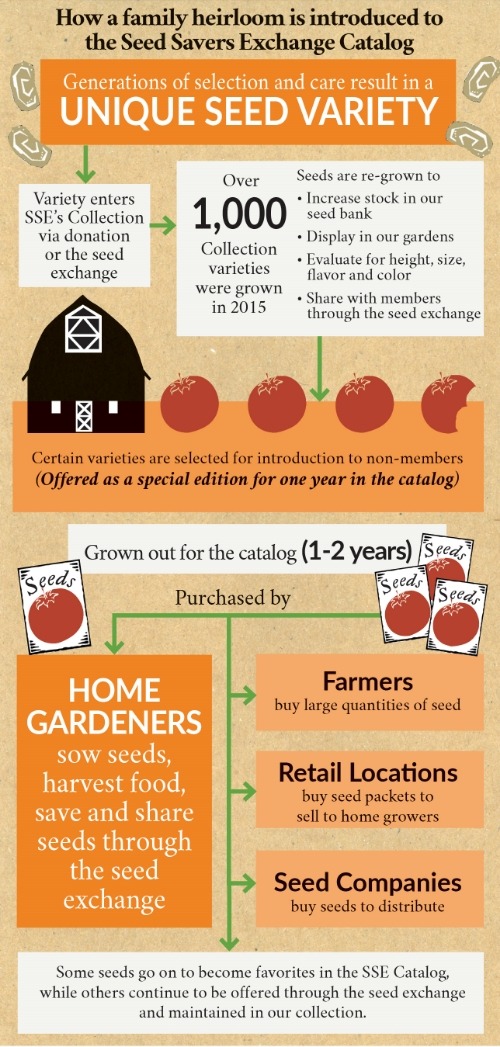When you make a purchase from Seed Savers Exchange, you help fulfill our nonprofit mission to protect our food and garden heritage. Do even more good by making a donation to help us preserve and share even more heirloom varieties!
Wick’s Lima Bean

The Heritage Farm Collection: ‘Wick’s’ lima bean
- Pole bean that climbs vigorously and grows slightly curved pods
- Flat seeds are either white with dark purple mottling or solid purple
- Fresh shelling limas are sweet, while dry limas are also nutty

In 2004, Helen & H. Lee Thomas of West Virginia donated ‘Wick’s Lima’ to Seed Savers Exchange. They have grown this lima bean since the 1960s after receiving it from H. Lee’s grandfather, Wick B. Smith of Sandyville, West Virginia. Wick farmed, taught in a one-room schoolhouse, and had grown this variety of lima since at least the 1930s. He lived to the age of 95 and was an avid gardener, keeping a large garden even after his wife passed away and sharing the extra produce with others.

Helen grows the plants on 6-foot-tall teepee-style poles, and the plants usually grow a little taller than the poles. Helen says to pick the pods as soon as they feel full for fresh eating. To cook, Helen adds a little butter and covers the limas with water. She says the juice is as good as the bean itself. Helen does not recommend eating the mature dry limas, using them only for seed, but in taste tests at Heritage Farm, the SSE staff thought it was a good-tasting dry bean lima.
Helen has never selected for a specific seed coat color. The seeds may be tan with purple speckles, tan with maroon speckles, or nearly all purplish.
Put it on the dinner table!
This variety works for
- Fresh eating
- Baking
- Soups
- Canning
- Freezing
As your lima beans are maturing, shell them and toss the fresh seeds into a traditional succotash.
If you grow your limas as dry beans, try adding them to mixed bean bakes or soups as the flavor of the bean will hold up well.
Grow it!
This crop can be direct seeded into warm soil after the last spring frost. If you sow a section or row every two or three weeks, you can get a continuous crop. Space your seeds 2-4 inches apart in well fertilized soil. Plant your seeds around 1 inch deep. As this plant grows it may need support in the form of a trellis to keep the vines off the ground. You won’t need to fertilize this crop in order to get a healthy yield.
These plants prefer warm weather and soil so they should be grown when temperatures are over 68 degrees F. You should avoid watering them from above as damp leaves may be susceptible to disease.
The CORE Project
This project represents the efforts of our Preservation program to document our Collection through the Evaluation and the Collection Origins Research Effort (CORE).
The CORE project began in 2011. It is an effort to record the Collection’s cultural history by gathering, documenting, and sharing stewardship history. Our comprehensive Evaluation program began in 2010. Evaluation staff document Collection growouts, including morphological traits, photographs, taste evaluation, and purity assessment. These programs converge to give us a rich portrait of individual varieties in our Collection.
When we identify varieties with both a compelling story and outstanding performance traits, they are ‘short listed’ for consideration in the ‘Heritage Farm Collection.’ Most ‘Heritage Farm Collection’ introductions are either family heirlooms or historic commercial varieties that faded from commerce.
